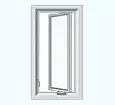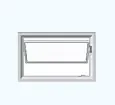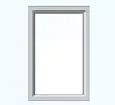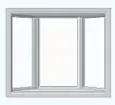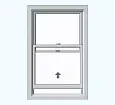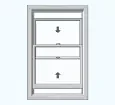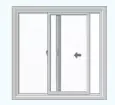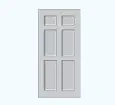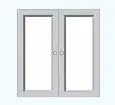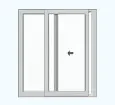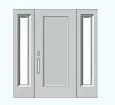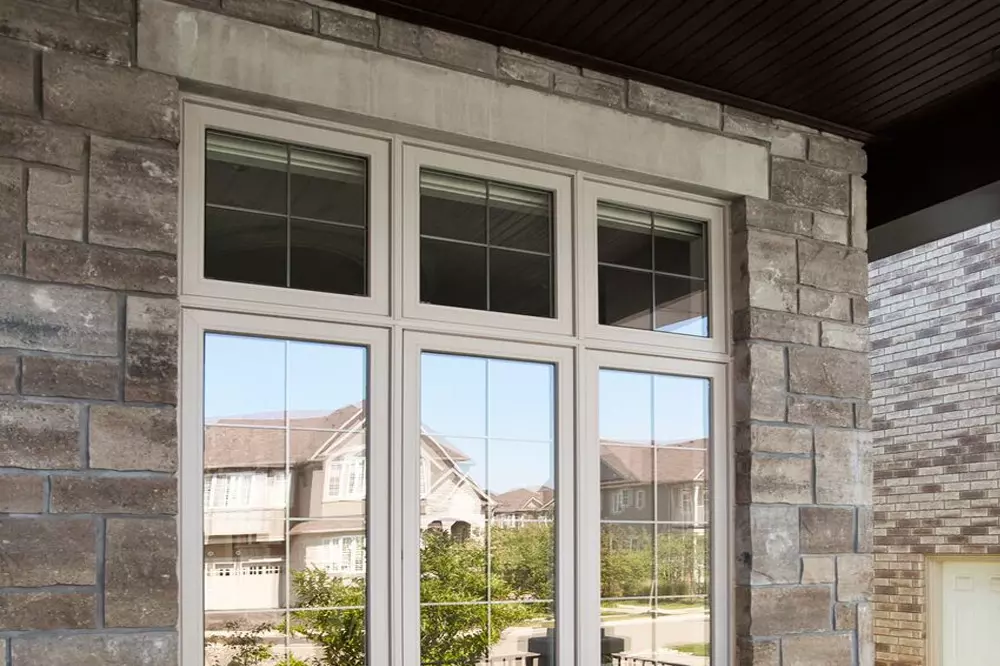Black mold, also known as Stachybotrys chartarum, is a type of toxic fungus that thrives in damp, warm environments. It can grow on a variety of surfaces in your home and poses health risks, particularly to those with respiratory conditions or weakened immune systems. Here’s a comprehensive look at black mold, where it can appear in your home, how it forms, how to identify it on your windows, and the best methods for removing and preventing it.
Why Black Mold is Bad
Black mold produces mycotoxins, which are harmful substances that can lead to several health problems. Prolonged exposure, especially in enclosed spaces like homes, can result in:
• Respiratory issues: Coughing, sneezing, and difficulty breathing are common symptoms, particularly for individuals with asthma or allergies.
• Skin irritation: Direct contact with black mold spores can cause rashes, itching, or other allergic reactions.
• Neurological problems: In extreme cases, mycotoxins have been linked to fatigue, headaches, and even memory loss.
• Weakened immunity: Long-term exposure may weaken your immune system, making you more susceptible to illnesses.
Given its potential harm, black mold is something you definitely want to address as soon as it’s detected.
Where Mold Can Appear In Your Home
Mold thrives in areas that are damp, poorly ventilated, and often warm. These conditions allow mold spores to land and proliferate. Here are common places where black mold might appear in your home:
1. Bathrooms: Behind shower curtains, around sinks, and in grout lines due to constant moisture.
2. Kitchens: Under sinks, in refrigerator seals, and around leaky faucets or dishwashers.
3. Basements: Leaky foundations, high humidity, or water damage from flooding can lead to mold growth on walls and floors.
4. Attics: Leaks in the roof or improper ventilation often create prime conditions for mold.
5. Windows: Condensation buildup can provide a perfect breeding ground for mold, especially on windowsills and frames.
How Mold Forms
Mold is a type of fungus that grows in moist environments. Mold spores are virtually everywhere, but they only develop into visible mold when they land on a surface with the right combination of:
• Moisture: Often from leaks, condensation, or humidity.
• Organic material: Mold feeds on materials like wood, drywall, and even dust.
• Warmth: Temperatures between 70–90°F are most conducive to mold growth.
• Poor ventilation: Mold thrives in areas with stagnant air, where moisture doesn’t evaporate efficiently.
Spotting Black Mold on Your Windows
Mold on windows can often be mistaken for dirt or dust, but there are distinct signs that you’re dealing with mold:
• Appearance: Black mold usually looks dark green or black with a slightly fuzzy texture. Sometimes, you may see dark streaks or spots.
• Musty smell: If your windowsills or frames give off a damp, musty odor, it’s a clear sign that mold may be present.
• Condensation: If moisture frequently collects on your windows, especially during colder months, it’s a warning sign that mold could develop soon.
Look for mold in corners, crevices, or cracks in your windowsills, around caulking, and on window frames—especially in wooden windows.
How to Remove Mold from Windows
If you spot black mold on your windows, it’s important to address it immediately. Here’s how you can safely remove mold:
Materials You’ll Need:
• Rubber gloves
• Mask (preferably N95 to avoid inhaling spores)
• Scrubbing brush or sponge
• Cleaning solution (such as white vinegar, hydrogen peroxide, or commercial mold cleaner)
• Clean cloths or paper towels
Steps:
1. Protect yourself: Wear gloves and a mask to avoid direct exposure to mold spores.
2. Ventilate the area: Open windows or use fans to ventilate the space you’re cleaning.
3. Apply cleaning solution: Use white vinegar or hydrogen peroxide (both have antifungal properties) and spray it directly on the moldy areas.
4. Let it sit: Allow the solution to sit for at least 10–15 minutes. This gives it time to kill the mold at its roots.
5. Scrub the mold away: Using a scrubbing brush or sponge, clean the moldy area thoroughly.
6. Wipe and dry: Use a clean cloth to wipe away the mold and moisture. Dry the area completely to prevent future growth.
7. Dispose of materials safely: Dispose of all cleaning materials and rags in sealed plastic bags.
If the mold problem persists or covers a large area, it may be time to consult a professional to handle the removal safely.
How to Protect Your Windows from Mold
Preventing mold growth is much easier than removing it. Here are some ways to protect your windows from future mold infestations:
1. Reduce humidity: Keep indoor humidity levels below 50% using dehumidifiers, especially in damp areas like kitchens and bathrooms.
2. Proper ventilation: Ensure that rooms with windows have proper airflow. Opening windows or using fans can help circulate air and prevent moisture buildup.
3. Regular cleaning: Clean windowsills and frames regularly, especially in rooms that tend to have high humidity.
4. Fix leaks promptly: Repair any window leaks or cracks to prevent moisture from seeping in.
5. Insulate windows: Condensation forms when there’s a big temperature difference between indoor and outdoor air. Insulating your windows can help minimize this.
6. Use a mold-resistant solution: Consider applying mold-resistant sealants or paints around windows to prevent mold spores from taking hold.
Conclusion
Black mold in your home, especially on windows, can lead to significant health issues and structural damage if left untreated. By understanding how mold forms, knowing the signs to look for, and taking proactive steps to clean and prevent it, you can keep your home—and your family—safe from its harmful effects. Regular maintenance, ventilation, and moisture control are key to ensuring your windows remain mold-free.

